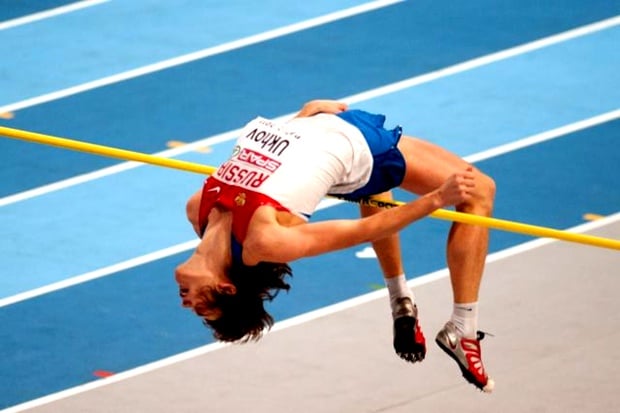With the track-and-field events in full swing at the Olympics, our minds are blown by how the athletes can run faster, jump higher, and throw farther than any normal human being. While I obviously never progressed to Olympic status, as a high jumper for 12 years I’ve often been asked if I can jump over the nearest ten-foot fence or pole. Answer: No, and I wouldn’t recommend you try it, either.
The truth is, some people are just born with serious hopping skills. And while most of us aren’t the next Jesse Owens, adding certain types of exercises to your fitness regimen can increase your vertical distance and build up your fast-twitch muscle fibers, which fatigue quickly but allow our bodies to generate short bursts of strength and speed.
So if your next goal is learn how to dunk or just beat your friend in a psuedo-long jump competition, try this beginner workout on for size. We recommend heading to your nearest high school football field or track for this. Note: If it’s your first time doing plyometrics, consult a trainer to ensure you’re performing the exercises properly.
Warmup
Circuit Workout
Cool down
Your muscles are likely to feel tight immediately after the workout, so to reduce the lactic acid buildup, jog an easy two laps around the track and stretch afterward. Be sure to drink plenty of water before and after the workout.
See Also:
The 30-Minute At-Home Olympian Workout
Train Like an Olympian at Equinox’s Shockwave Class
Why Michael Phelps Sleeps in an Altitude Chamber


















